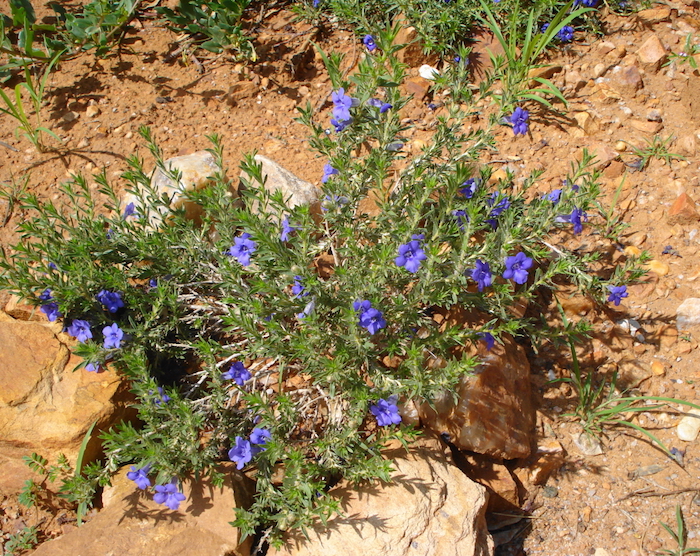OFTEN found along roads, the so-called milkweed or wild cotton, Afr. kapokbos, wilde kapok, melkbos, tontelbos; Ger. Wilde Baumwolle; (Gomphocarpus fruticosus) and wild cotton or Afr. bergkapok (G. tomentosus) does not flower very conspicuously, but is very easy to identify by its heart-shaped, balloon-like fruit with a beaked point and covered with hair-like bristles.
In older sources these plants used to be called Asclepias fruticosus and A. tomentosus. Up to 10 flowers, each on a slender stalk, hang in clusters from the twigs.
When ripe, the fruit splits open to release the seeds attached to a tuft of long silky threads on account of which these plants are called ‘wild cotton’ although they are not related to that plant at all.
Gomphocarpus fruticosus has smooth bright green leaves, while G. tomentosus is a grey-green plant because it is covered with short velvety hairs (photo). Decoctions of the roots are used medicinally and the pulverised dry leaves are said to be an excellent hay fever remedy, while the poisonous milk sap was used by hunter-gatherers on their arrows.
According to Veronica Roodt in her highly informative book ‘Common Wild Flowers of the Okavango Delta’ Gomphocarpus fruticosus was accidentally introduced to southern Africa from Australia, probably as a garden plant.
She mentions the use of an infusion of the roots as a cough medicine while an infusion of the leaves, fruit and roots is used to treat diarrhoea. A tea of the leaves has also been used as a purgative by European farmers in South Africa.
The inflated fruits make an attractive decoration when floating on water in a glass container, hence the Afrikaans name ‘gansies’ meaning ‘little geese’. It is worth remembering that the dried fruit – due to the explosive nature of the silky hairs – can be used as firelighters, hence the Afrikaans name ‘tontelbos’ or ‘tinderbush’.
Dr E von Koenen in “Healing, Poisonous and Edible plants in Namibia” mentions the following medicinal properties for G. tomentosum, which probably is indigenous to Namibia: the Haikum pulverise stems and leaves and inhale the powder to relieve a stuffed nose. They boil the entire plant with its root to wash their genitals to treat venereal diseases.
In the central-north people say that the meat of a cow that died of anthrax may be eaten with impunity after having been boiled together with the roots of this plant. They also strew the pulverised roasted leaves on wounds caused by syphilis and gonorrhoea.
When walking in the bush one often finds one or several of the five Aptosimum species occurring in Namibia, all of them having very pretty, somewhat irregular purple or blue tubular flowers with three of the lobes slightly longer than the other two. The German name ‘Pantoffelbluemchen’ or Engl ‘slipper flower’ refers to this shape.
In Afrikaans ‘koffiepit’ or ‘doringviooltjie’ and ‘rolvarkie’. The flowers have darker markings at the base of the petal lobes and stripes in the throat. In German they are also referred to as ‘Hereroveilchen’ meaning ‘Herero violets’.
The genus name Aptosimum means “does not fall off” and refers to the woody seed pods of this genus that remain on the plant when it dries out.Environ 1
Stay informed with The Namibian – your source for credible journalism. Get in-depth reporting and opinions for
only N$85 a month. Invest in journalism, invest in democracy –
Subscribe Now!






